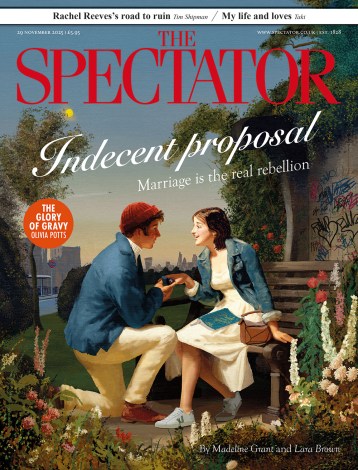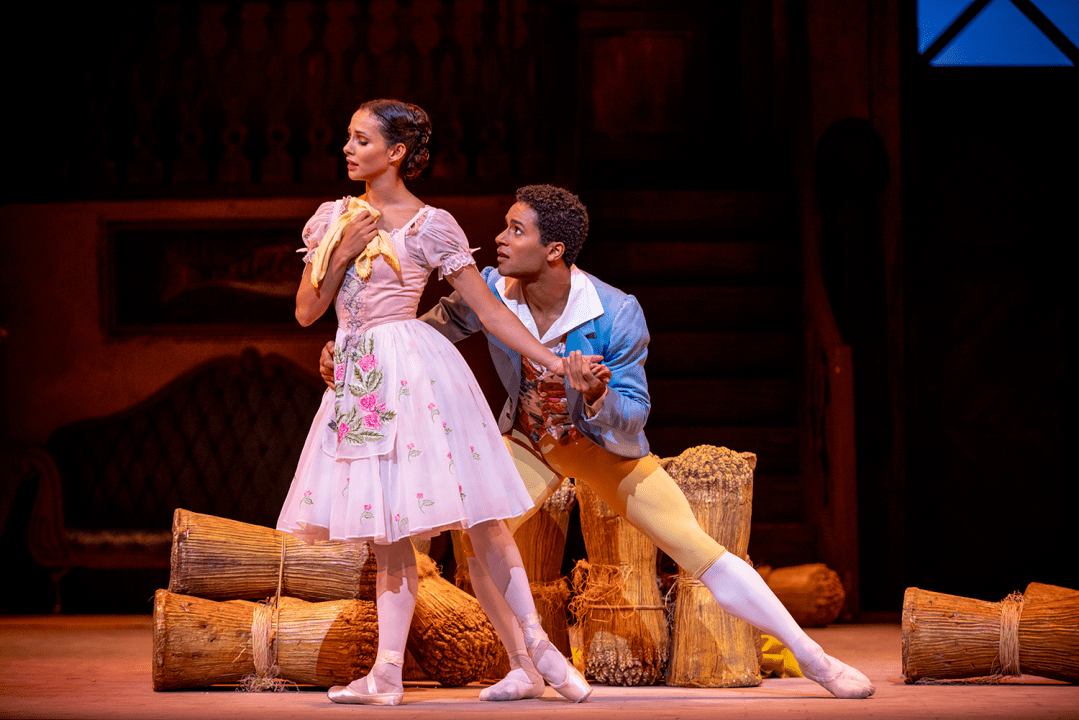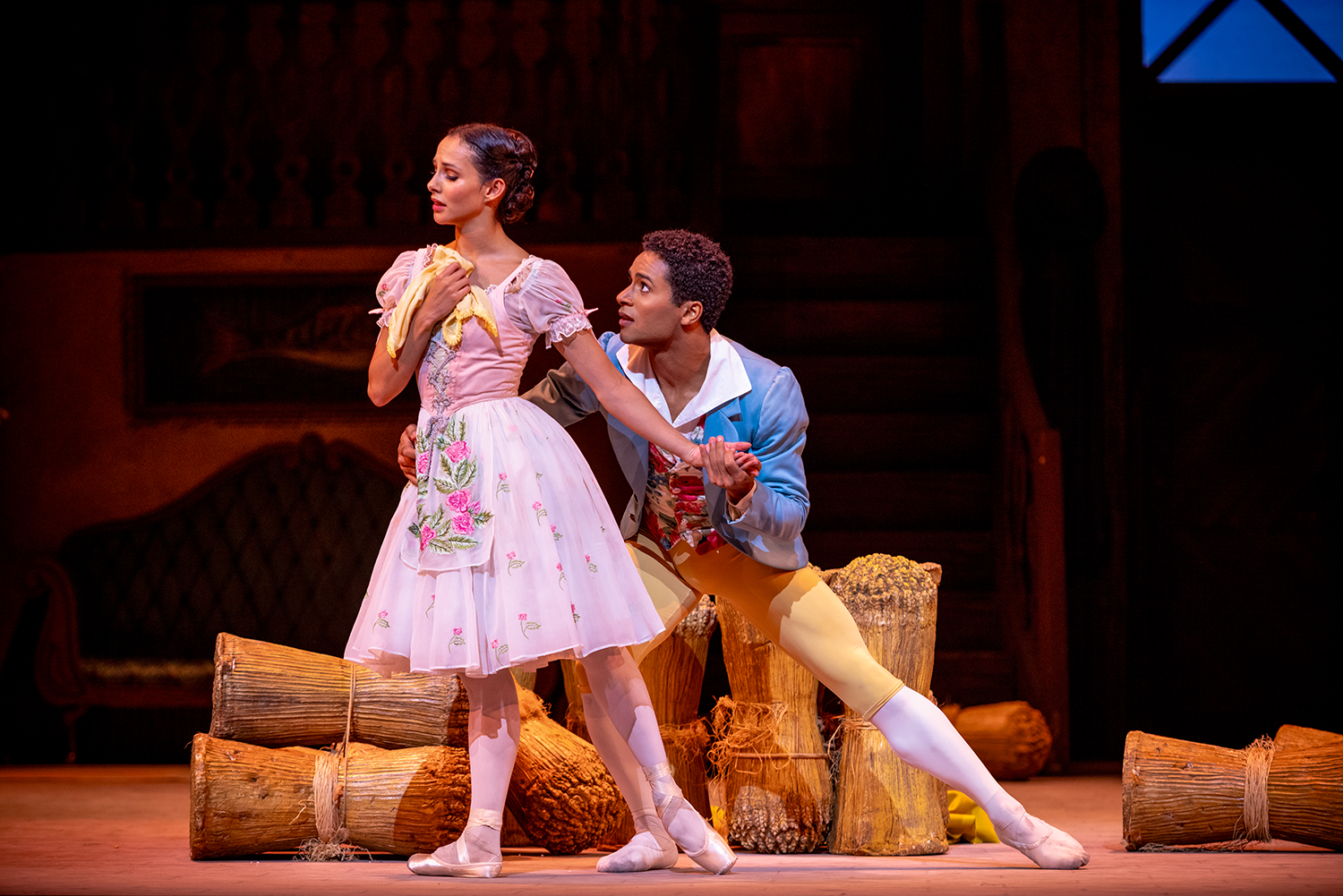
The winter nights may be drawing in and everyone is down with stinking colds as the civilised world inexorably disintegrates, but in La Fille mal gardée, it’s sunlit springtime and young love is busting out all over. Frederick Ashton’s bucolic masterpiece, revived by the Royal Ballet, manages to be both child-like in its innocence and wickedly sophisticated in what it demands of the dancers – it looks so artless, so easy, and it just isn’t. Of Ashton’s supreme genius in the devising of it all there can be no doubt, but John Lanchbery and Osbert Lancaster deserve credit too – Lanchbery’s pasticcio score is a chocolate box filled with toe-tapping tunes, and Lancaster’s affectionately witty designs have a perfectly judged lightness of touch. What simple joy they have bequeathed us.
For the production’s 374th performance, Francesca Hayward and Marcelino Sambé led the cast as the swain Colas and the farmer’s daughter Lise. They made an enchanting pair (perhaps it helps that they are close pals off stage): Sambé, laddish and fearless, an irresistibly exuberant show-off, Hayward his sweetheart, warmed by a gentle smile rather than the usual ballerina rictus grin and more than making up in charm for any shortage of those twists, bends and skippity-hops that Ashton fiendishly prescribed. James Hay never sank to scene-stealing camp as the pantomime dame Widow Simone and Joshua Junker was touchingly both comic and pathetic as the simpleton Alain. The corps sparkled in folkish dances, embodying the playful spirit of merry May. Plaudits all round, including to the rumbustious orchestra under Jonathan Lo.
One of the most influential figures in modern dance, Akram Khan has met his midlife crisis: at the age of 51, he’s given up performing and dissolved the company that he has been running for a quarter of a century. Now he is looking as a maker beyond his roots in the classical Indian kathak school towards other Asian traditions – and for his new piece, Thikra: Night of Remembering, he has been inspired by a visit to AlUla, a remote Arabian desert region on the silk route. In collaboration with the Saudi artist Manal AlDowayan, he has drawn on myths of the area to create a sort of Rite of Spring, in which a dozen women gather under a matriarch to summon up ancestral ghosts and find rebirth and transcendence.
It lasts only an hour, but I found it heavy-going and borderline kitsch. Aditya Prakash’s music is relentlessly high in decibels and Zeynep Kepekli’s gloomy lighting is unforgiving. Khan’s choreography echoes Martha Graham’s obsession with deep pelvic squats and in the absence of the mercurial elegance of kathak, the portentous solemnity of it all threatens to become vacuously pretentious. ‘The new story begins here,’ Khan writes in the programme. He needs to brighten it up a bit.
Wayne McGregor, on the other hand, needs to tone it down. Prolific, ubiquitous, and an impressive polymath, McGregor is a great energiser and motivator. A nice man, too, and a good thing: I only wish that he’d stop racing ahead of us all, and create some dance that is focused on drawing emotion out of human movement.
But that’s not his game. He’s in thrall to the cutting-edge arcana of AI, cybernetics and neuroscience, and he expounds on them with the proselytising zeal of a TED talker. Infinite Bodies, a new exhibition at Somerset House, reviews some of his most experimental work in the form of son et lumière installations. Curved screens, banks of flashing LED lights and robotic machinery effect all sort of weird and wonderful transformations on to gyrating humanoid images. Do they have aesthetic purpose or meaning beyond celebrating their own ingenuity? One stares at them in bafflement and wonder. But I don’t think this techno wizardry marks a way forward for dance.








Comments